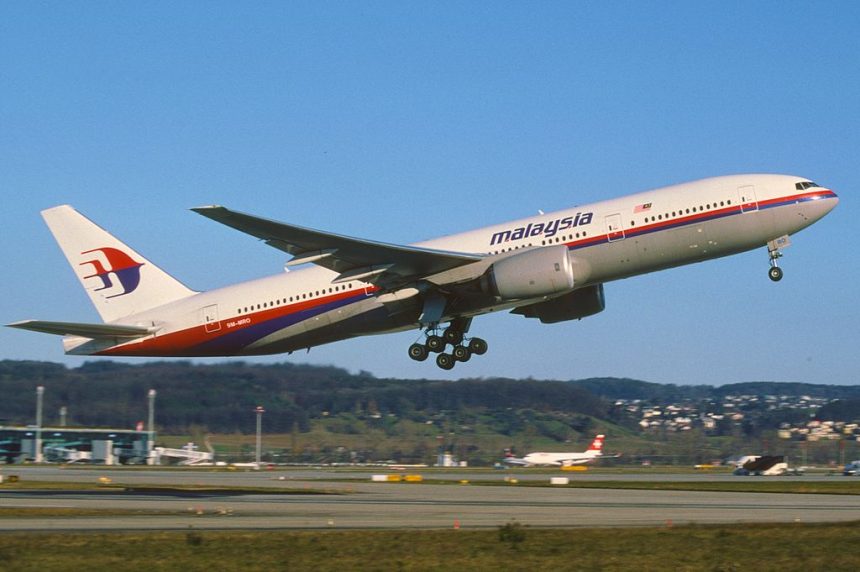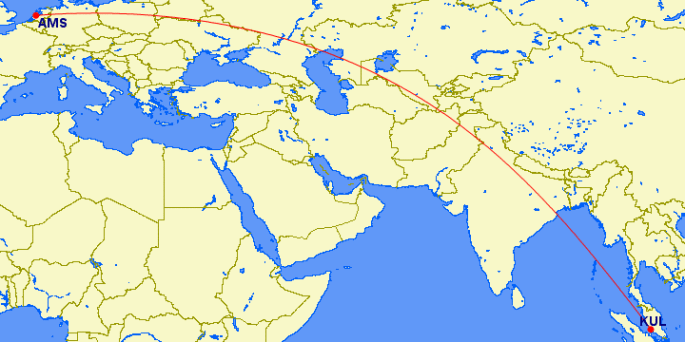In order to save time, fuel airliners to fly from departure airport to destination as close as possible to a Great Circle.
A great circle is the shortest path interconnecting two points on a sphere.
Since Earth is almost spherical, routes followed by aircraft follow great circles between departure and destination because they are shorter, thus make flights shorter and cheaper for airlines.
Obviously, it’s impossible to fly along the Great Circle until destination: aircraft departing from an airfield have to follow SIDs (Standard Instrumental Departure) routes, have to comply with airspace restrictions, avoid dangerous airspaces (or fly above them, as in the case of the MH17 shot down over Ukraine) or bad weather etc.
Nevertheless, routes are planned in such a way they are as close as possible to a Great Circle and the ideal GC route from Amsterdam to Kuala Lumpur crosses Ukraine.
Image credit: Great Circle Mapper
All European airlines followed (more or less) the same route and crossed the same airspace during long haul flights to Asia. Indeed, Singapore Airlines SQ351 (B777) and Air India AI113 (B787) were in the vicinity of Malaysia Airlines MH17 when it was hit by a missile (or more than one) most probably fired by an SA-11 Gadfly system.
Ukrainian authorities had banned aircraft from flying below FL320 (32,000 ft) but MH17, at FL330 was still within the reach of some of the most deadly weaponry in the hands of pro-Russia separatists that have been using SAM (Surface to Air Missile) systems quite effectively against Ukrainian Air Force aircraft.
The airspace over eastern Ukraine was closed to civilian flights after the incident.
Since no other restriction was in place, Malaysia Airlines flight dispatcher could plan the usual route to from AMS to KUL. Unfortunately that route brought the Boeing 777 in the wrong place at the wrong time.
Top image credit: Wiki

















